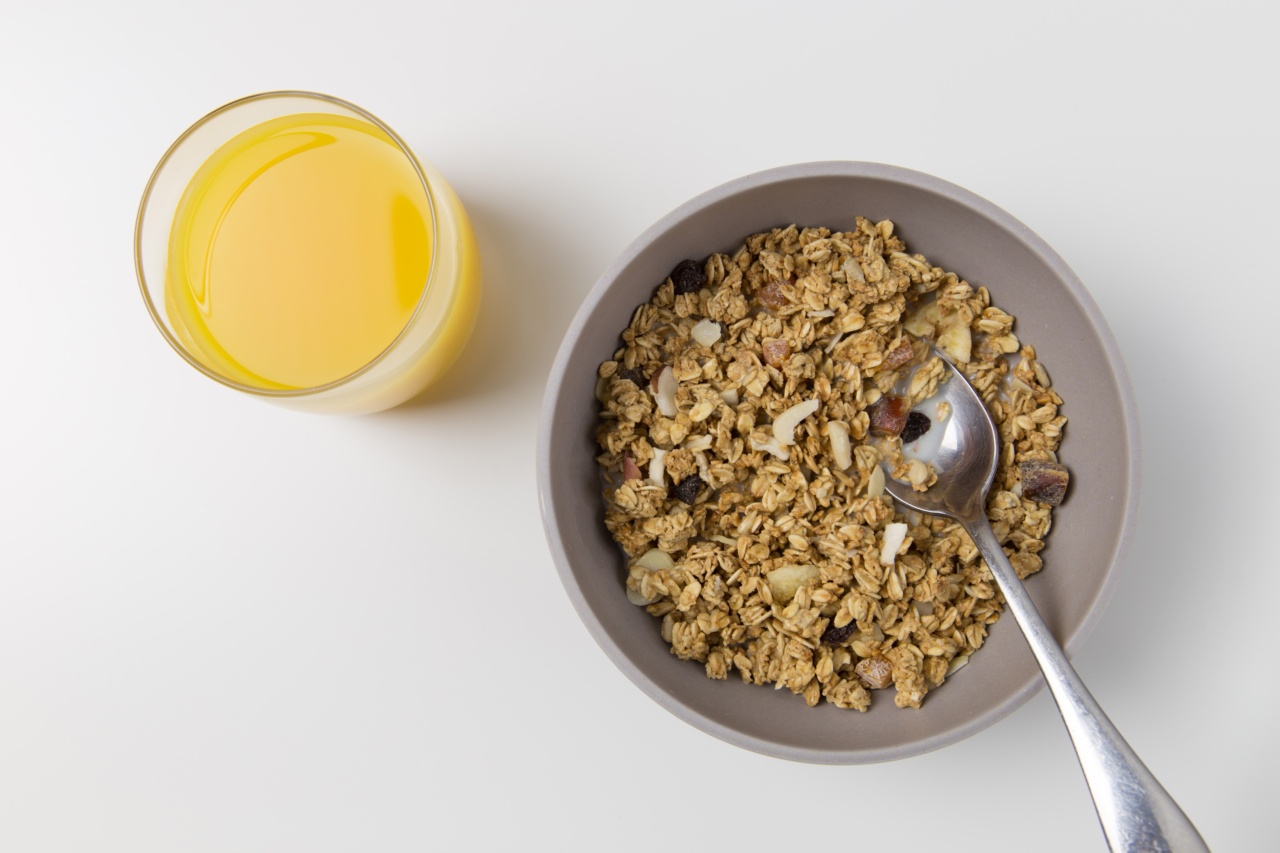Eating a balanced and nutritious diet is essential for maintaining good health. While many people focus on consuming adequate protein, healthy fats, vitamins, and minerals, they often overlook the importance of dietary fiber.
Fiber is a crucial component of a healthy diet and offers a wide range of benefits for our body.
What is Fiber?
Fiber, also known as roughage, is a type of carbohydrate that cannot be digested or absorbed by our bodies. It passes through our digestive system almost intact and provides a range of health benefits.
Unlike other nutrients, fiber does not provide energy (calories) to our bodies, but it plays a vital role in maintaining proper digestive function.
The Types of Fiber
There are two main types of fiber: insoluble fiber and soluble fiber.
Insoluble Fiber
Insoluble fiber does not dissolve in water and adds bulk to the stool, thus preventing constipation. It helps regulate bowel movements, supports a healthy digestive system, and prevents various digestive disorders.
Sources of insoluble fiber include:.
- Whole grains
- Nuts and seeds
- Bran
- Vegetables
Soluble Fiber
Soluble fiber, as the name suggests, dissolves in water to form a gel-like substance in the digestive tract. It promotes healthy digestion, regulates blood sugar levels, and helps lower cholesterol levels in the body.
Sources of soluble fiber include:.
- Fruits (such as apples, oranges, and berries)
- Legumes (such as beans, lentils, and chickpeas)
- Oats
- Barley
The Benefits of Fiber in a Healthy Diet
Now that we understand the different types of fiber, let’s explore the numerous benefits it offers when incorporated into a healthy diet:.
1. Improved Digestive Health
Fiber plays a significant role in maintaining healthy digestion. It adds bulk to the stool, prevents constipation, and promotes regular bowel movements.
Additionally, fiber helps prevent digestive disorders such as diverticulitis, hemorrhoids, and irritable bowel syndrome (IBS).
2. Weight Management
Fiber-rich foods are generally low in calories and can help you feel full for longer periods. By including more fiber in your meals, you can curb overeating, manage your weight more effectively, and reduce the risk of obesity.
3. Blood Sugar Regulation
Soluble fiber slows down the digestion and absorption of carbohydrates, leading to a more gradual release of glucose into the bloodstream.
This helps regulate blood sugar levels, preventing spikes and crashes that can contribute to diabetes and other metabolic disorders.
4. Heart Disease Prevention
Fiber has been consistently linked to a reduced risk of heart disease. Soluble fiber helps lower LDL (bad) cholesterol levels by binding to cholesterol particles and promoting their elimination from the body.
A high-fiber diet can also help lower blood pressure and reduce the risk of cardiovascular problems.
5. Healthy Gut Microbiome
The gut microbiome refers to the trillions of microorganisms that reside in our digestive system. Fiber acts as a prebiotic, providing nourishment for beneficial gut bacteria.
A healthy gut microbiome is crucial for optimal digestion, nutrient absorption, and immune function.
6. Reduced Risk of Colon Cancer
Research suggests that a diet high in fiber can lower the risk of developing colon cancer. Insoluble fiber adds bulk to the stool, reducing the time harmful substances stay in contact with the colon lining.
Soluble fiber also produces short-chain fatty acids, which have anti-cancer properties.
7. Enhanced Skin Health
Adequate fiber intake can contribute to healthy and radiant skin. Fiber helps eliminate toxins from the body, preventing them from building up and potentially causing skin problems such as acne and inflammation.
8. Prevention of Hemorrhoids
Straining during bowel movements due to constipation is a common cause of hemorrhoids. Insoluble fiber adds bulk to the stool, creating softer and easier-to-pass stools. This, in turn, reduces the risk of developing painful hemorrhoids.
How to Incorporate Fiber into Your Daily Diet
Incorporating fiber into your daily meals is not as challenging as it may seem. Here are some simple yet effective ways to increase your fiber intake:.
1. Choose Whole Grains
Swap refined grains for whole grains, such as whole wheat bread, brown rice, and whole grain pasta. Whole grains retain their fiber content and offer more nutritional benefits compared to their refined counterparts.
2. Enjoy Plenty of Fruits and Vegetables
Fruits and vegetables are excellent sources of fiber, vitamins, and minerals. Aim to include a variety of colorful fruits and vegetables in your daily meals. Berries, oranges, apples, broccoli, carrots, and leafy greens are great fiber-rich options.
3. Include Legumes in Your Diet
Legumes, including beans, lentils, and chickpeas, are packed with fiber, protein, and other essential nutrients. Add them to soups, stews, salads, or enjoy them as a main course to increase your fiber intake.
4. Snack on Nuts and Seeds
Nuts and seeds are not only a great source of healthy fats but also provide a good amount of fiber. Snack on almonds, walnuts, chia seeds, or flaxseeds to boost your daily fiber intake.
5. Opt for High-Fiber Cereals and Oats
Start your day with a bowl of high-fiber cereal or oats. Look for options that contain at least 3 grams of fiber per serving. You can also enhance the fiber content by adding fresh fruits, nuts, or seeds as toppings.
6. Make Smoothies with Greens
Smoothies can be a delicious and easy way to increase your fiber intake. Blend leafy greens like spinach or kale into your smoothies along with fruits, yogurt, or a scoop of nut butter.
7. Sprinkle Fiber-Rich Toppings
Sprinkle fiber-rich toppings like ground flaxseeds, chia seeds, or bran on your yogurt, salads, or cooked dishes. These small additions can significantly boost your fiber intake without altering the taste of your favorite foods.
Healthy Fiber Intake Guidelines
It is important to consume an adequate amount of fiber daily. The general recommendation for adults is to consume 25-30 grams of fiber per day. However, individual requirements may vary based on age, sex, and overall health.
If you are unsure about your fiber intake, consult a healthcare professional or a registered dietitian.
Remember to increase your fiber intake gradually and drink plenty of water throughout the day. Sudden significant changes in fiber consumption can lead to bloating, gas, and digestive discomfort.
In Conclusion
Fiber is an integral part of a healthy diet and offers numerous benefits for our overall well-being.
By incorporating fiber-rich foods into our meals and following healthy fiber intake guidelines, we can support digestive health, manage weight, regulate blood sugar levels, and reduce the risk of various chronic diseases. So, make fiber a priority in your diet and reap the rewards of a healthier and happier life!.





























